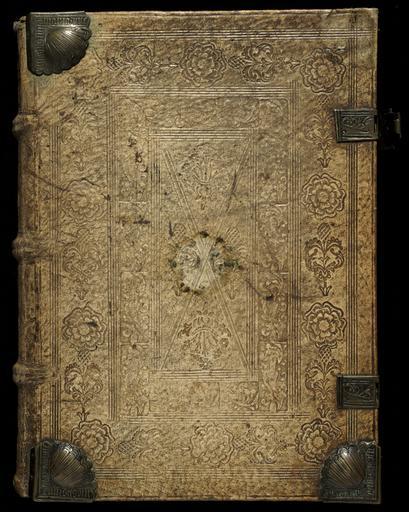MAKE A MEME
View Large Image

| View Original: | German_binding,_late_15th_or_early_16th_century.jpg (817x1024) | |||
| Download: | Original | Medium | Small | Thumb |
| Courtesy of: | www.flickr.com | More Like This | ||
| Keywords: bookbinding historic antique book binding photo border texture German books of this period were often bound in alum-tawed pigskin, a very durable skin and particularly suited to blind tooling. In this example, the pigskin is laid over thick wooden boards and there are two clasps at the fore-edge. Placing the catchplate for the clasp on the upper cover was a typical feature of German and Netherlandish bindings; on English and French bindings this is reversed and the catchplate is on the lower cover. The engraved metal corner pieces and now missing centerpiece helped to protect the book from dirt and rubbing. Deposited by the Society of Mary (NZ), 2001. Upper cover of Bartholomaeus Anglicus, De proprietatibus rerum (Strassburg: [Printer of the 1483 Jordanus de Quedlinburg (Georg Husner)], 11 Aug. 1491). qRSM Story BART 1491. German books of this period were often bound in alum-tawed pigskin, a very durable skin and particularly suited to blind tooling. In this example, the pigskin is laid over thick wooden boards and there are two clasps at the fore-edge. Placing the catchplate for the clasp on the upper cover was a typical feature of German and Netherlandish bindings; on English and French bindings this is reversed and the catchplate is on the lower cover. The engraved metal corner pieces and now missing centerpiece helped to protect the book from dirt and rubbing. Deposited by the Society of Mary (NZ), 2001. Upper cover of Bartholomaeus Anglicus, De proprietatibus rerum (Strassburg: [Printer of the 1483 Jordanus de Quedlinburg (Georg Husner)], 11 Aug. 1491). qRSM Story BART 1491. | ||||